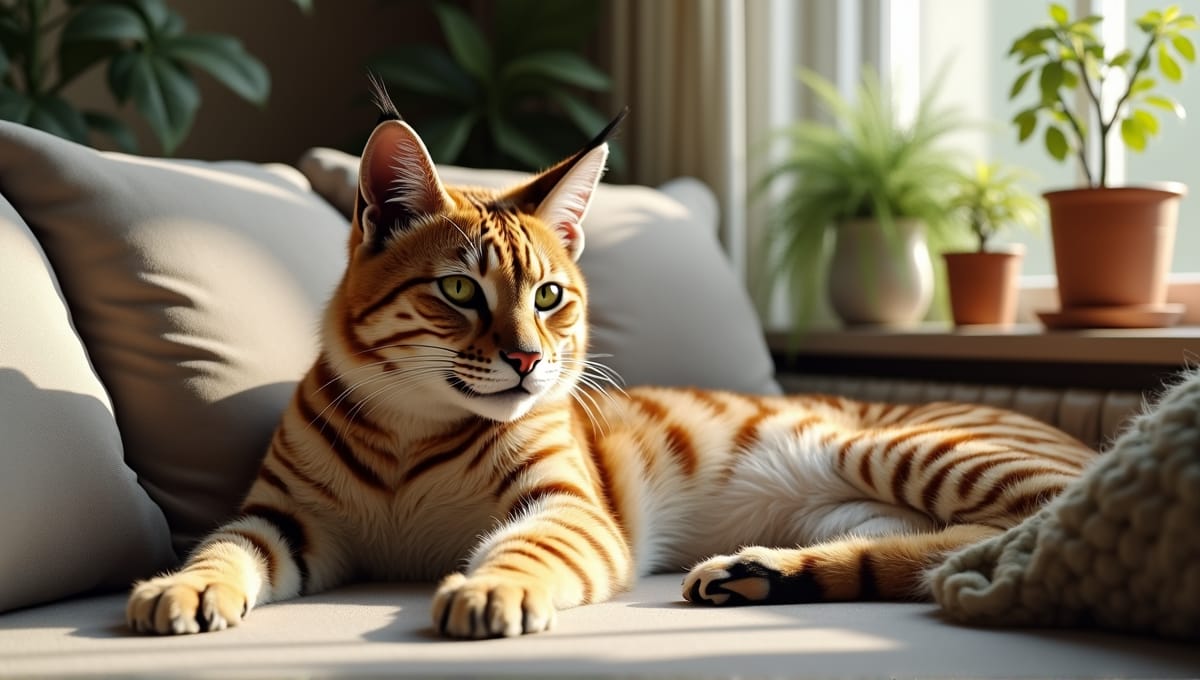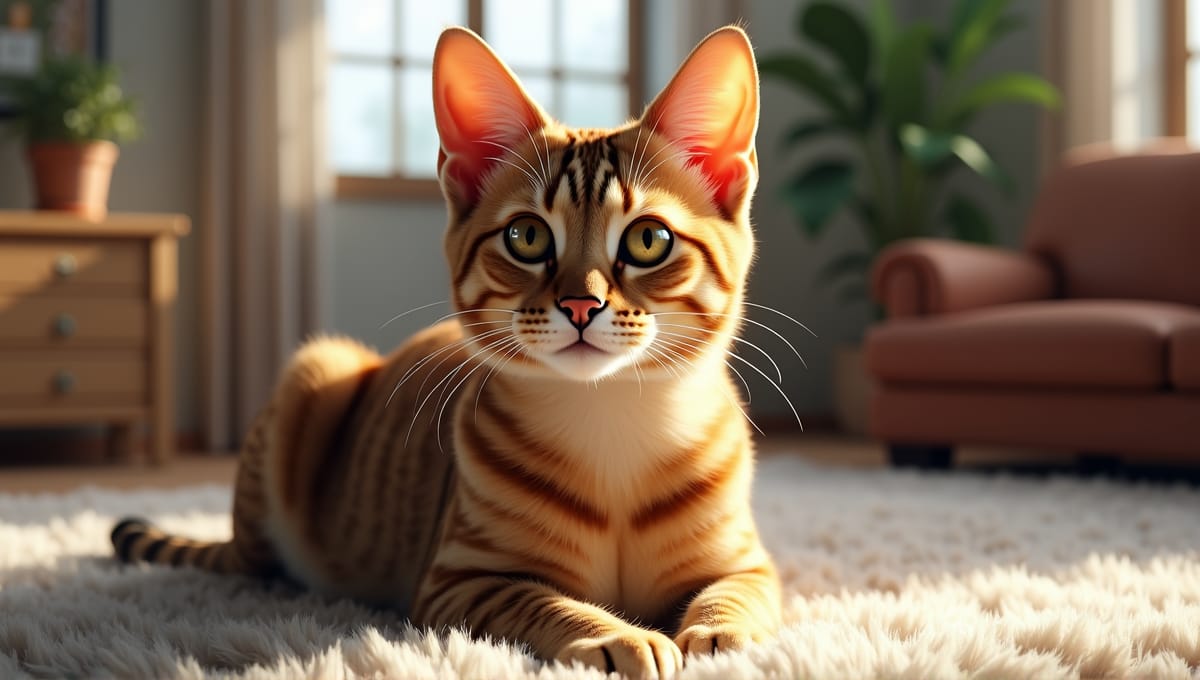As a lifelong cat lover and expert, I’ve come across plenty of wonderful breeds. The Balinese cat is one of the most interesting and charming breeds. These graceful cats have all of the excellent qualities of their Siamese ancestors plus a beautiful, medium length coat. If you’re intrigued by the idea of a Balinese cat, learn more about the breed below.
Balinese Cat Breed Overview
Balinese cats are a beautiful medium-sized cat with a unique and regal appearance. These cats have long, silky hair and piercing blue eyes. They have a slender, muscular build with a wedge-shaped head and large, pointed ears. Balinese cats typically weigh 5-8 pounds and have a lifespan of 18-22 years. Some even live into their mid-20s!
The breed has an interesting origin story:
- It is a natural mutation of the Siamese cat.
- It dates back to the 1920s.
- It was named after the elegant Balinese dancers.
- It was originally known as the “longhaired Siamese cat.”
Balinese cats are directly related to the Siamese cat and shares many of the same physical characteristics, except for hair length. The long, flowing hair of the Balinese immediately sets them apart from their short-haired Siamese relatives.
The breed slowly gained recognition over the years:
- It was first registered as a breed in cat shows in 1928.
- It achieved championship status in 1961.
- It was accepted by all major North American cat associations by 1970.
Today, the Balinese cat is recognized by nearly all cat registries. It is highly regarded for its stunning appearance, intelligence, and loving disposition.
Distinctive Characteristics of Siamese Long-Hairs

Balinese cats are known for their playful and intelligent nature. These cats love to learn new tricks and solve puzzles. You’ll often find them figuring out how to open doors or cabinets. Their curiosity and problem-solving skills never cease to amaze me.
These felines are incredibly social. They crave attention and interaction with their human family members. Balinese cats will follow you around the house chatting away in their soft melodic voices. They’re not as loud as some other breeds but they’re definitely conversationalists.
When it comes to children and other pets Balinese cats are generally friendly. They score about
- 3 out of 5 for both categories.
- However they really shine in their affection towards owners scoring a solid 4 out of 5. These cats form strong bonds with their humans and love to be involved in all household activities.
Balinese cats have a high need for attention. On a scale of 1 to 5 they score a full
Caring for and Grooming Your Siamese-Derived Feline
Despite the Balinese cat’s long, flowing coat, they’re relatively low maintenance when it comes to grooming. They earn a grooming requirement score of 2 out of 5 because their fur doesn’t mat easily, and they’re excellent self-groomers.
You’ll need to brush Balinese cats once a week to remove loose fur and distribute oils from their skin. This keeps their coat in good condition and minimizes shedding. If it’s shedding season, you may want to increase to twice a week.
You don’t need to bathe Balinese cats unless they get into something dirty. Their fur naturally resists dirt and stays clean thanks to self-grooming. If you do bathe your Balinese cat, use a gentle cat shampoo.
Also, don’t forget to:
- trim their nails every few weeks
- brush their teeth regularly to avoid any potential dental issues
If you can get them used to these grooming tasks as kittens, they’re usually pretty good about it as adults.
Balinese cats are active and playful, so make sure they have plenty of:
- toys
- climbing structures
- interactive play
to keep them mentally and physically stimulated. If they get bored, they can become destructive, so environmental enrichment is important.
Health Considerations for Balinese Cats

Balinese cats are generally healthy, but like all breeds, they are susceptible to a few health issues. As a good pet owner, it’s helpful to be aware of these potential problems.
One health issue to watch for is hepatic amyloidosis, which is a liver disease that typically occurs in Balinese cats aged 1-7 years. Symptoms include weight loss, decreased appetite, and jaundice. You can catch this condition early with regular checkups.
Another concern with Balinese cats is PRA (Progressive Retinal Atrophy), which is a genetic condition that causes cats to gradually go blind. Kittens with PRA typically begin showing signs around 7 months of age and can lose all vision by 3-5 years old. While there is no cure, if you detect it early, you can take measures to manage the condition.
To avoid these health issues, prioritize preventive care. This includes
- regular vet checkups
- vaccinations
- dental cleanings
to keep your Balinese cat healthy. I always advocate for pet insurance to help mitigate the cost of unexpected health issues.
Diet also plays a significant role in the overall health of your cat. It’s important to ensure your Balinese cat eats a high-quality, balanced diet with plenty of protein. Don’t overfeed your cat, as obesity can lead to a number of health issues. And of course, always provide fresh water for your cat and be mindful of its eating habits for any changes.
Balinese Cat Breed History and Development
The Balinese breed has an interesting history closely intertwined with the Siamese breed. These long-haired cats originally arose as spontaneous mutations in litters of Siamese cats. Breeders were reluctant to accept these long-haired kittens at first, as they didn’t want to “ruin” the Siamese breed.
Key milestones in the breed’s official recognition include:
- 1928: First registered as show cats
- 1961: Became a Cat Fanciers’ Federation Champion breed
- 1970: Accepted by all major North American organizations
- 2008: Merged with the Javanese breed in the Cat Fanciers’ Association
- 2010: Single breed standard established for both Balinese and Javanese
Several key breeders are responsible for the Balinese breed as we know it today. Helen Smith and Sylvia Holland were instrumental in developing the long-haired Siamese cats. These women worked diligently to establish breeding lines and gain acceptance for the breed in the cat fancy world.
Breed standards have evolved over time. Early Balinese were heavier and had round heads. Today’s Balinese are more slender and refined, resembling a modern-day Siamese cat with long hair.
Selecting and Bringing Home a Long-Haired Siamese

Before you bring a Balinese cat home, think about your lifestyle. Balinese cats require a lot of attention and interaction. If you’re often away from home for long periods, a Balinese may not be the best choice.
To find a reputable Balinese cat breeder, start with breed-specific clubs or cat fancy organizations. Look for breeders who health test their cats and keep a clean, healthy environment for their kittens. Feel free to ask about health guarantees and information about the kitten’s parents.
Adoption fees for Balinese cats can vary significantly. You may find Balinese cats for as little as $400 or as much as $2,000, depending on the breeder and the cat’s lineage. Also, don’t forget to account for other costs, such as supplies, food, and vet trips.
Getting your home ready for a Balinese cat means setting up:
- a litter box
- scratching posts
- climbing structures
Balinese cats are quite active and enjoy vertical spaces, so invest in several cat trees and similar structures. Additionally, ensure that your home is free of any potential hazards, like loose wires or toxic plants.
If you’re curious about other unique breeds, you might enjoy reading about the Chantilly Tiffany. This breed also has stunning long hair and a mild temperament. Additionally, you could explore chinese cat breeds to understand the variety within this fascinating feline world.
Living with a Balinese Cat
Balinese cats care about daily grooming, regular playtime, and feeding. If you stick to a consistent grooming and feeding Balinese daily schedule, it will be a happy camper. They appreciate routine and schedule, so plan daily playtime with your Balinese cat and stick to a consistent feeding.
They love routine. Daily playtime is also critical for Balinese cats. They are probably the most playful and active breed in this group. They love playtime with:
- wand toys
- puzzle feeders
to keep your Balinese cat mentally stimulated.
Balinese cats require a little bit more training and socialization than some other breeds in this group. They are very smart, and you can teach them tricks. Just use positive reinforcement and start their training and socialization early. The goal of socializing your Balinese cat is just to expose it to lots of different:
- people
- sounds
- experiences
One thing that sets Balinese cats apart from the rest is that they need a more enriching environment. Make sure to provide plenty of vertical space through:
- cat trees
- cat shelves
You can also keep the Balinese cat breed entertained by rotating cat toys. Finally, the third thing all Balinese cats seem to enjoy is window perches, as Balinese cats love perching in the window and watching birds.
Balinese cats are another very talkative and social breed. They turn into a very vocal and sometimes clingy cat if ignored, but daily playtime can eliminate this behavior. Just remember to play daily with your Balinese cat, as most Balinese cats consider you their family. If you’re also interested in diverse feline companions, consider the exotic cat breeds for unique and beautiful characteristics.
Final Thoughts
Balinese cats are intriguing animals. They are beautiful and have charming, active personalities. I’ve personally experienced how Balinese cats can enrich a home with their affection and intelligence.
They’re not only pretty, but they’re also very interactive cats. Just be sure to give them lots of mental stimulation and frequent grooming, and your Balinese cat will be happy and healthy. With good care, these cats can be excellent family members for up to 20 years.






